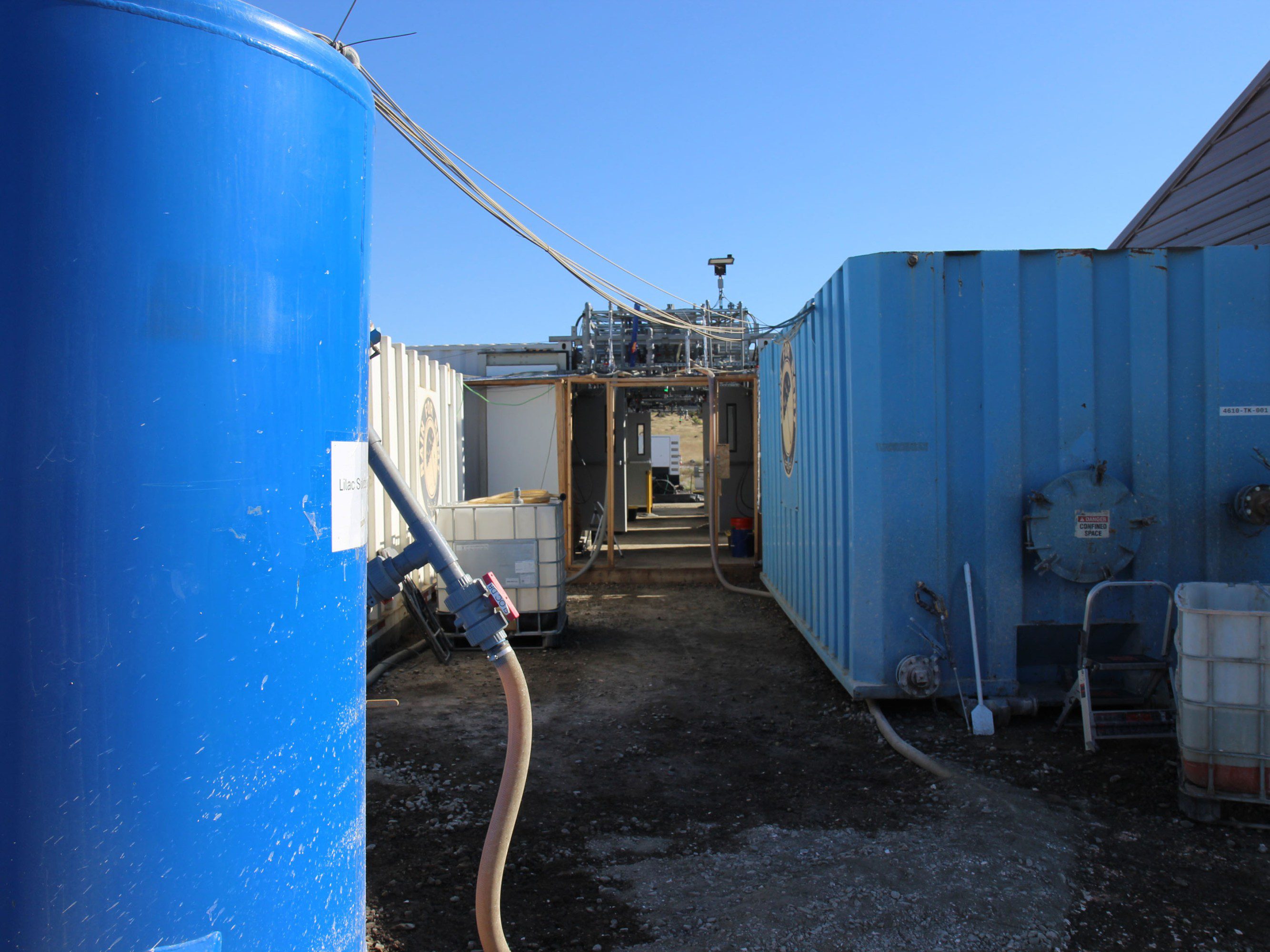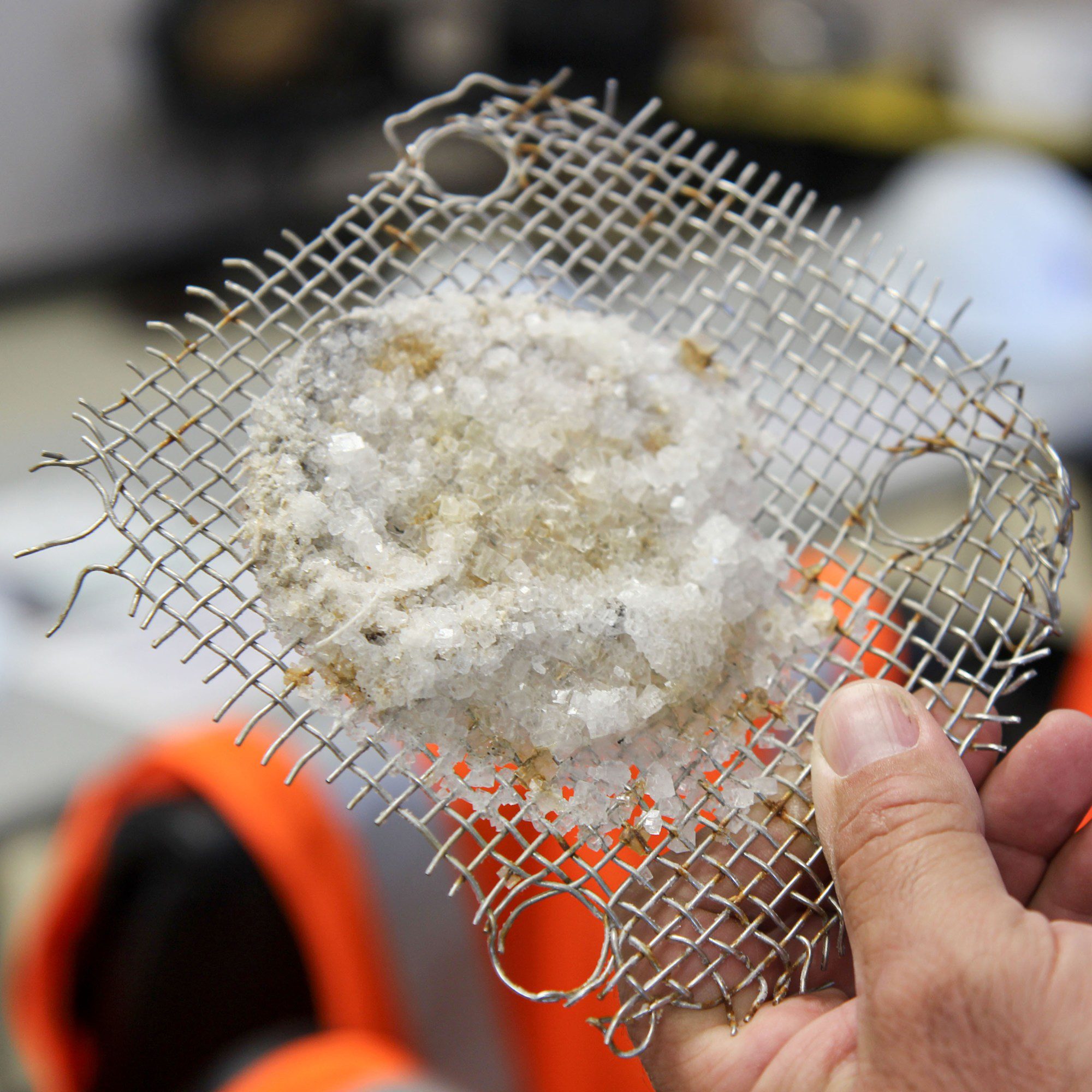How healthy am I? My immunome knows the score.
The story is a collaboration between MIT Technology Review and Aventine, a non-profit research foundation that creates and supports content about how technology and science are changing the way we live.
It’s not often you get a text about the robustness of your immune system, but that’s what popped up on my phone last spring. Sent by John Tsang, an immunologist at Yale, the text came after his lab had put my blood through a mind-boggling array of newfangled tests. The result—think of it as a full-body, high-resolution CT scan of my immune system—would reveal more about the state of my health than any test I had ever taken. And it could potentially tell me far more than I wanted to know.
“David,” the text read, “you are the red dot.”
Tsang was referring to an image he had attached to the text that showed a graph with a scattering of black dots representing other people whose immune systems had been evaluated—and a lone red one. There also was a score: 0.35.
I had no idea what any of this meant.
The red dot was the culmination of an immuno-quest I had begun on an autumn afternoon a few months earlier, when a postdoc in Tsang’s lab drew several vials of my blood. It was also a significant milestone in a decades-long journey I’ve taken as a journalist covering life sciences and medicine. Over the years, I’ve offered myself up as a human guinea pig for hundreds of tests promising new insights into my health and mortality. In 2001, I was one of the first humans to have my DNA sequenced. Soon after, in the early 2000s, researchers tapped into my proteome—proteins circulating in my blood. Then came assessments of my microbiome, metabolome, and much more. I have continued to test-drive the latest protocols and devices, amassing tens of terabytes of data on myself, and I’ve reported on the results in dozens of articles and a book called Experimental Man. Over time, the tests have gotten better and more informative, but no test I had previously taken promised to deliver results more comprehensive or closer to revealing the truth about my underlying state of health than what John Tsang was offering.
Over the years, I’ve offered myself up as a human guinea pig for hundreds of tests promising new insights into my health and mortality. But no test I had previously taken promised to deliver results more comprehensive or closer to revealing the truth about my underlying state of health.
It also was not lost on me that I’m now 20-plus years older than I was when I took those first tests. Back in my 40s, I was ridiculously healthy. Since then, I’ve been battered by various pathogens, stresses, and injuries, including two bouts of covid and long covid—and, well, life.
But I’d kept my apprehensions to myself as Tsang, a slim, perpetually smiling man who directs the Yale Center for Systems and Engineering Immunology, invited me into his office in New Haven to introduce me to something called the human immunome.
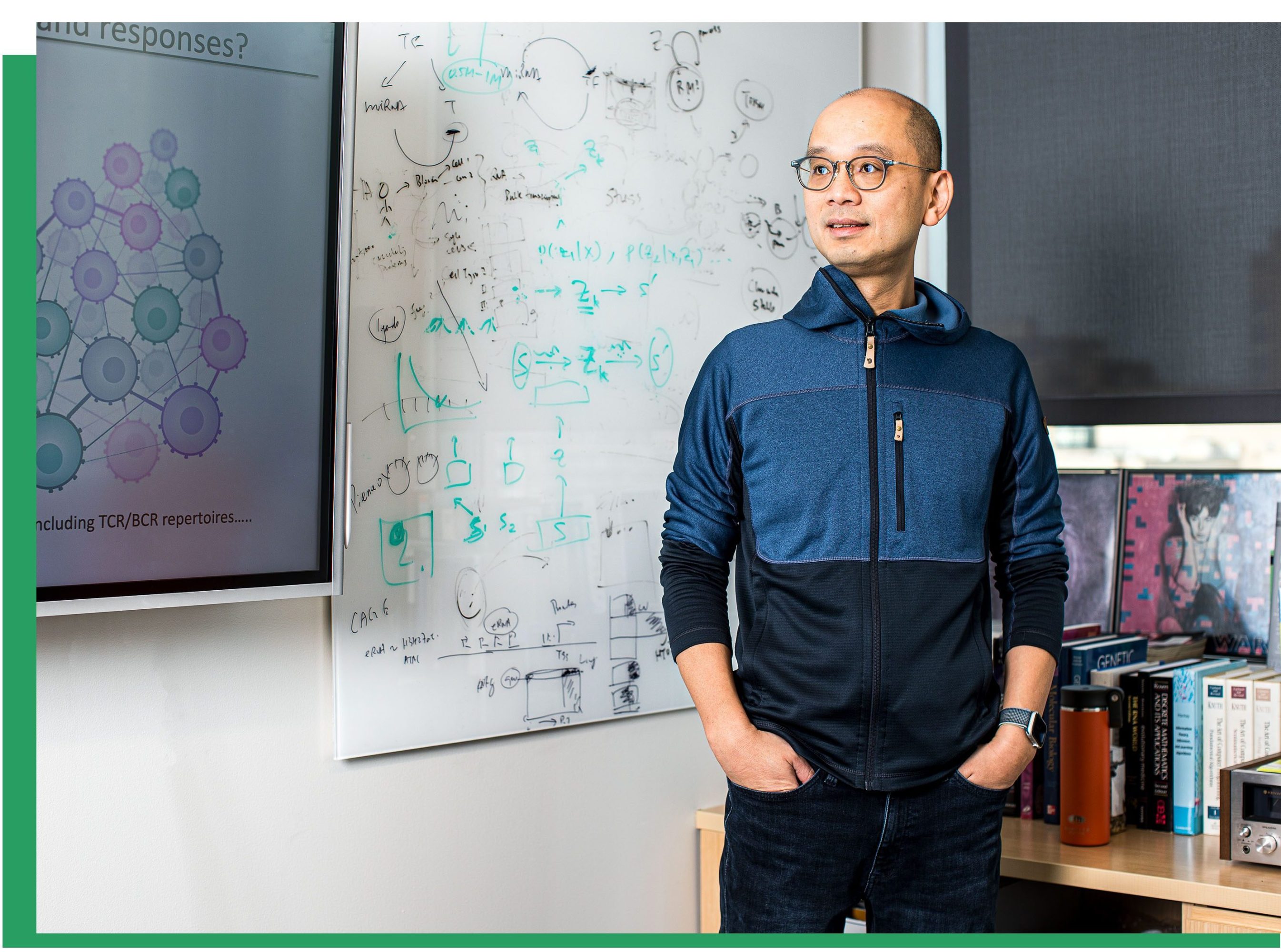
Made up of 1.8 trillion cells and trillions more proteins, metabolites, mRNA, and other biomolecules, every person’s immunome is different, and it is constantly changing. It’s shaped by our DNA, past illnesses, the air we have breathed, the food we have eaten, our age, and the traumas and stresses we have experienced—in short, everything we have ever been exposed to physically and emotionally. Right now, your immune system is hard at work identifying and fending off viruses and rogue cells that threaten to turn cancerous—or maybe already have. And it is doing an excellent job of it all, or not, depending on how healthy it happens to be at this particular moment.
Yet as critical as the immunome is to each of us, this universe of cells and molecules has remained largely beyond the reach of modern medicine—a vast yet inaccessible operating system that powerfully influences everything from our vulnerability to viruses and cancer to how well we age to whether we tolerate certain foods better than others.
Now, thanks to a slew of new technologies and to scientists like Tsang, who is on the Steering Committee of the Chan Zuckerberg Biohub New York, understanding this vital and mysterious system is within our grasp, paving the way for powerful new tools and tests to help us better assess, diagnose and treat diseases.
Already, new research is revealing patterns in the ways our bodies respond to stress and disease. Scientists are creating contrasting portraits of weak and robust immunomes—portraits that someday, it’s hoped, could offer new insights into patient care and perhaps detect illnesses before symptoms appear. There are plans afoot to deploy this knowledge and technology on a global scale, which would enable scientists to observe the effects of climate, geography, and countless other factors on the immunome. The results could transform what it means to be healthy and how we identify and treat disease.
It all begins with a test that can tell you whether your immune system is healthy or not.
Reading the immunome
Sitting in his office last fall, Tsang—a systems immunologist whose expertise combines computer science and immunology— began my tutorial in immunomics by introducing me to a study that he and his team wrote up in a 2024 paper published in Nature Medicine. It described the results of measurements made on blood samples taken from 270 subjects—tests similar to the ones Tsang’s team would be running on me. In the study, Tsang and his colleagues looked at the immune systems of 228 patients diagnosed with a variety of genetic disorders and a control group of 42 healthy people.
To help me visualize what my results might look like, Tsang opened his laptop to reveal several colorful charts from the study, punctuated by black dots representing each person evaluated. The results reminded me vaguely of abstract paintings by Joan Miró. But in place of colorful splotches, whirls, and circles were an assortment of scatter plots, Gantt charts, and heat maps tinted in greens, blues, oranges, and purples.
It all looked like gibberish to me.
Luckily, Tsang was willing to serve as my guide. Flashing his perpetually patient smile, he explained that these colorful jumbles depicted what his team had uncovered about each subject after taking blood samples and assessing the details of how well their immune cells, proteins, mRNA, and other immune system components were doing their job.



The results placed people—represented by the individual dots—on a left-to-right continuum, ranging from those with unhealthy immunomes on the left to those with healthy immunomes on the right. Background colors, meanwhile, were used to identify people with different medical conditions affecting their immune systems. For example, olive-green indicated those with auto-immune disorders; orange backgrounds were designated for individuals with no known disease history. Tsang said he and his team would be placing me on a similar graph after they finished analyzing my blood.
Tsang’s measurements go significantly beyond what can be discerned from the handful of immune biomarkers that people routinely get tested for today. “The main immune cell panel typically ordered by a physician is called a CBC differential,” he told me. CBC, which stands for “complete blood count,” is a decades-old type of analysis that counts levels of red blood cells, hemoglobin, and basic immune cell types (neutrophils, lymphocytes, monocytes, basophils, and eosinophils). Changes in these levels can indicate whether a person’s immune system might be reacting to a virus or other infection, cancer, or something else. Other blood tests—like one that looks for elevated levels of C-reactive protein, which can indicate inflammation associated with heart disease—are more specific than the CBC. But they still rely on blunt counting—in this case of certain proteins.
Tsang’s assessment, by contrast, tests up to a million cells, proteins, mRNA and immune biomolecules—significantly more than the CBC and others. His protocol is designed to paint a more holistic portrait of a person’s immune system by not only counting cells and molecules but also by assessing their interactions. The CBC “doesn’t tell me as a physician what the cells being counted are doing,” says Rachel Sparks, a clinical immunologist who was the lead author of the Nature Medicine study and is now a translational medicine physician with the drug giant AstraZeneca. “I just know that there are more neutrophils than normal, which may or may not indicate that they’re behaving badly. We now have technology that allows us to see at a granular level what a cell is actually doing when a virus appears—how it’s changing and reacting.”
Tsang’s measurements go significantly beyond what can be discerned from the handful of immune biomarkers that people routinely get tested for today. His assessment tests up to a million cells, proteins, mRNA and immune biomolecules.
Such breakthroughs have been made possible thanks to a raft of new and improved technologies that have evolved over the past decade, allowing scientists like Tsang and Sparks to explore the intricacies of the immunome with newfound precision. These include devices that can count myriad different types of cells and biomolecules, as well as advanced sequencers that identify and characterize DNA, RNA, proteins, and other molecules. There are now instruments that also can measure thousands of changes and reactions that occur inside a single immune cell as it reacts to a virus or other threat.
Tsang and Spark’s’ team used data generated by such measurements to identify and characterize a series of signals distinctive to unhealthy immune systems. Then they used the presence or absence of these signals to create a numerical assessment of the health of a person’s immunome—a score they call an “immune health metric,” or IHM.
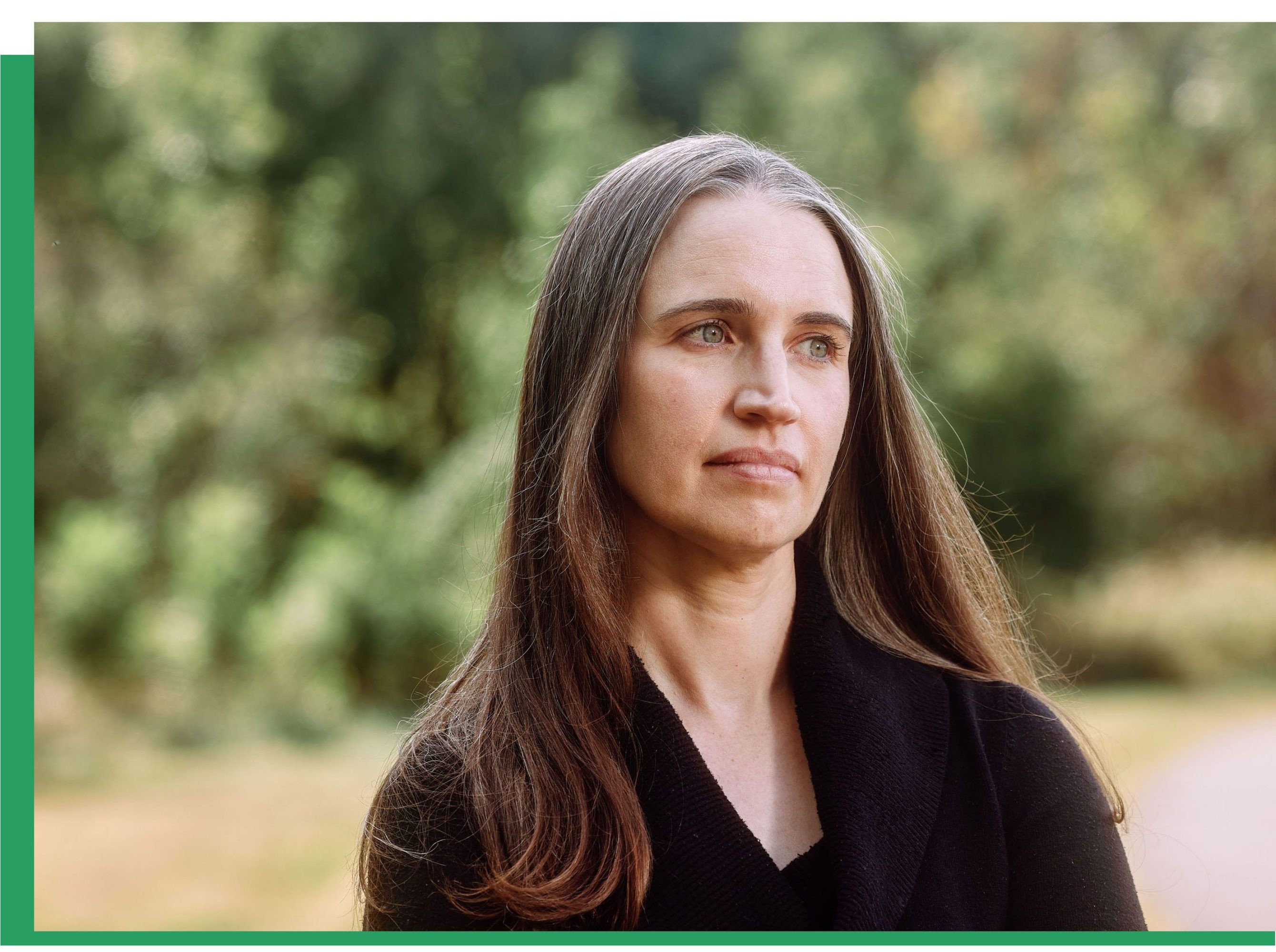


To make sense of the crush of data being collected, Tsang’s team used machine-learning algorithms that correlated the results of the many measurements with a patient’s known health status and age. They also used AI to compare their findings with immune system data collected elsewhere. All this allowed them to determine and validate an IHM score for each person, and to place it on their spectrum, identifying that person as healthy or not.
It all came together for the first time with the publication of the Nature Medicine paper, in which Tsang and his colleagues reported the results from testing multiple immune variables in the 270 subjects. They also announced a remarkable discovery: Patients with different kinds of diseases reacted with similar disruptions to their immunomes. For instance, many showed a lower level of the aptly named natural killer immune cells, regardless of what they were suffering from. Critically, the immune profiles of those with diagnosed diseases tended to look very different from those belonging to the outwardly healthy people in the study. And, as expected, immune health declined in the older patients.
But then the results got really interesting. In a few cases, the immune systems of unhealthy and healthy people looked similar, with some people appearing near the “healthy” area of the chart even though they were known to have diseases. Most likely this was because their symptoms were in remission and not causing an immune reaction at the moment when their blood was drawn, Tsang told me.
In other cases, people without a known disease showed up on the chart closer to those who were known to be sick. “Some of these people who appear to be in good health are overlapping with pathology that traditional metrics can’t spot,” says Tsang, whose Nature Medicine paper reported that roughly half the healthy individuals in the study had IHM scores that overlapped with those of people known to be sick. Either these seemingly healthy people had normal immune systems that were busy fending off, say, a passing virus, or their immune systems had been impacted by aging and the vicissitudes of life. Potentially more worrisome, they were harboring an illness or stress that was not yet making them ill but might do so eventually.
These findings have obvious implications for medicine. Spotting a low immune score in a seemingly healthy person could make it possible to identify and start treating an illness before symptoms appear, diseases worsen, or tumors grow and metastasize. IHM-style evaluations could also provide clues as to why some people respond differently to viruses like the one that causes covid, and why vaccines—which are designed to activate a healthy immune system—might not work as well in people whose immune systems are compromised.
Spotting a low immune score in a seemingly healthy person could make it possible to identify and start treating an illness before symptoms appear, diseases worsen, or tumors grow and metastasize.
“One of the more surprising things about the last pandemic was that all sorts of random younger people who seemed very healthy got sick and then they were gone,” says Mark Davis, a Stanford immunologist who helped pioneer the science being developed in labs like Tsang’s. “Some had underlying conditions like obesity and diabetes, but some did not. So the question is, could we have pointed out that something was off with these folks’ immune systems? Could we have diagnosed that and warned people to take extra precautions?”
Tsang’s IHM test is designed to answer a simple question: What is the relative health of your immune system? But there are other assessments being developed to provide more detailed information on how the body is doing. Tsang’s own team is working on a panel of additional scores aimed at getting finer detail on specific immune conditions. These include a test that measures the health of a person’s bone marrow, which makes immune cells. “If you have a bone marrow stress or inflammatory condition in the bone marrow, you could have lower capacity to produce cells, which will be reflected by this score,” he says. Another detailed metric will measure protein levels to predict how a person will respond to a virus.
Tsang hopes that an IHM-style test will one day be part of a standard physical exam—a snapshot of a patient’s immune system that could inform care. For instance, has a period of intense stress compromised the immune system, making it less able to fend off this season’s flu? Will someone’s score predict a better or worse response to a vaccine or a cancer drug? How does a person’s immune system change with age?
Or, as I anxiously wondered while waiting to learn my own score, will the results reveal an underlying disorder or disease, silently ticking away until it shows itself?
Toward a human immunome project
The quest to create advanced tests like the IHM for the immune system began more than 15 years ago, when scientists like Mark Davis became frustrated with a field in which research—primarily in mice—was focused mostly on individual immune cells and proteins. In 2007 he launched the Stanford Human Immune Monitoring Center, one of the first efforts to conceptualize the human immunome as a holistic, body-wide network in human beings. Speaking by Zoom from his office in Palo Alto, California, Davis told me that the effort had spawned other projects, including a landmark twin study showing that a lot of immune variation is not genetic, which was then the prevailing theory, but is heavily influenced by environmental factors—a major shift in scientists’ understanding.
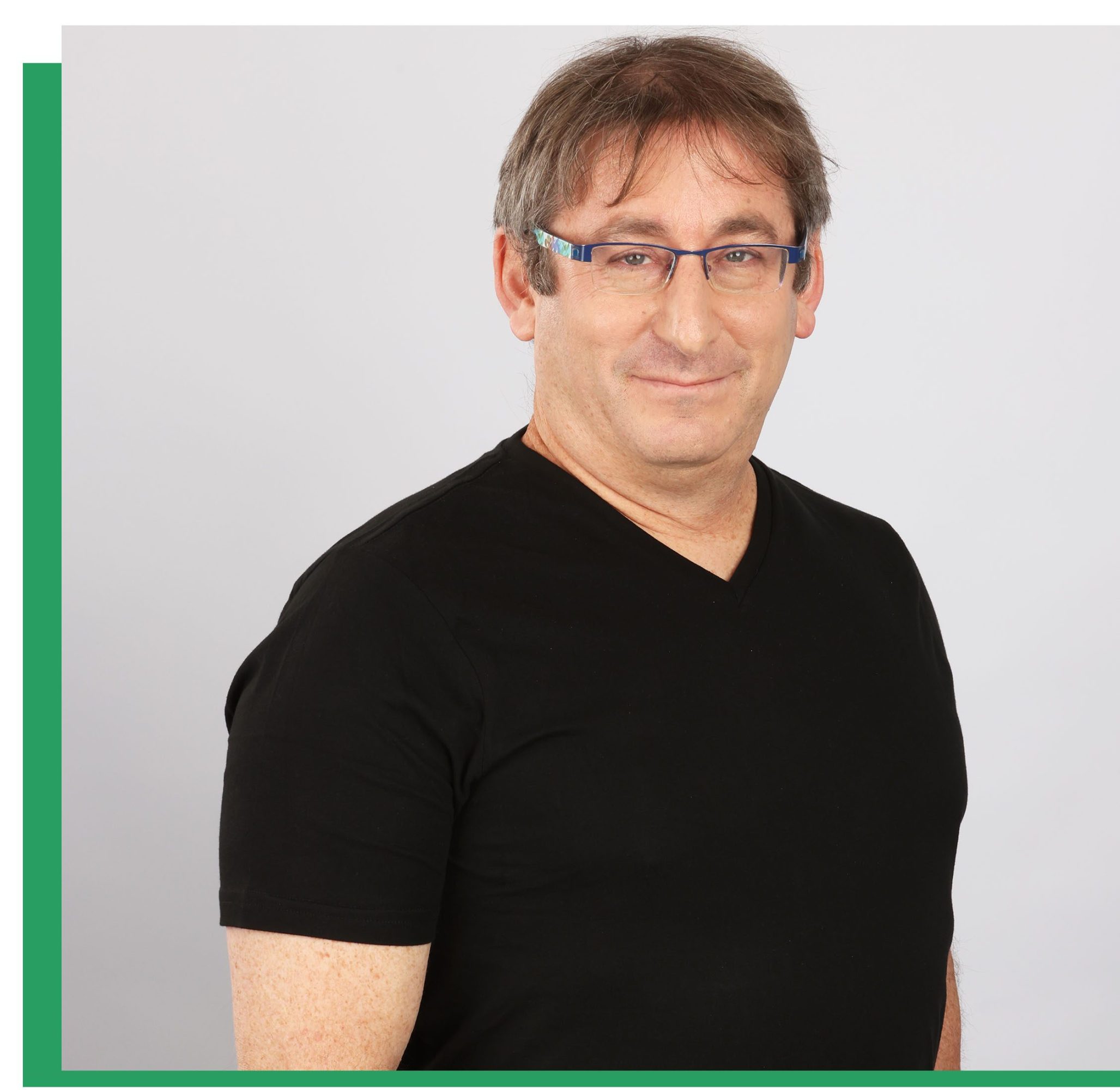


Davis and others also laid the groundwork for tests like John Tsang’s by discovering how a T cell—among the most common and important immune players—can recognize pathogens, cancerous cells, and other threats, triggering defensive measures that can include destroying the threat. This and other discoveries have revealed many of the basic mechanics of how immune cells work, says Davis, “but there’s still a lot we have to learn.”
One researcher working with Davis in those early days was Shai Shen-Orr, who is now director of the Zimin Institute for AI Solutions in Healthcare at the Technion-Israel Institute of Technology, based in Haifa, Israel. (He’s also a frequent collaborator with Tsang.) Shen-Orr, like Tsang, is a systems immunologist. He recalls that in 2007, when he was a postdoc in Davis’s lab, immunologists had identified around 100 cell types and a similar number of cytokines—proteins that act as messengers in the immune system. But they weren’t able to measure them simultaneously, which limited visibility into how the immune system works as a whole. Today, Shen-Orr says, immunologists can measure hundreds of cell types and thousands of proteins and watch them interact.
Shen-Orr’s current lab has developed its own version of an immunome test that he calls IMM-AGE (short for “immune age”), the basics of which were published in a 2019 paper in Nature Medicine. IMM-AGE looks at the composition of people’s immune systems—how many of each type of immune cell they have and how these numbers change as they age. His team has used this information primarily to ascertain a person’s risk of heart disease.
Shen-Orr also has been a vociferous advocate for expanding the pool of test samples, which now come mostly from Americans and Europeans. “We need to understand why different people in different environments react differently and how that works,” he says. “We also need to test a lot more people—maybe millions.”
Tsang has seen why a limited sample size can pose problems. In 2013, he says, researchers at the National Institutes of Health came up with a malaria vaccine that was effective for almost everyone who got it during clinical trials conducted in Maryland. “But in Africa,” he says, “it only worked for about 25% of the people.” He attributes this to the significant differences in genetics, diet, climate, and other environmental factors that cause people’s immunomes to develop differently. “Why?” he asks. “What exactly was different about the immune systems in Maryland and Tanzania? That’s what we need to understand so we can design personalized vaccines and treatments.”
“What exactly was different about the immune systems in Maryland and Tanzania? That’s what we need to understand so we can design personalized vaccines and treatments.”
John Tsang
For several years, Tsang and Shen-Orr have advocated going global with testing, “but there has been resistance,” Shen-Orr says. “Look, medicine is conservative and moves slowly, and the technology is expensive and labor intensive.” They finally got the audience they needed at a 2022 conference in La Jolla, California, convened by the Human Immunome Project, or HIP. (The organization was originally founded in 2016 to create more effective vaccines but had recently changed its name to emphasize a pivot from just vaccines to the wider field of immunome science.) It was in La Jolla that they met HIP’s then-new chairperson, Jane Metcalfe, a cofounder of Wired magazine, who saw what was at stake.
“We’ve got all of these advanced molecular immunological profiles being developed,” she said, “but we can’t begin to predict the breadth of immune system variability if we’re only testing small numbers of people in Palo Alto or Tel Aviv. And that’s when the big aha moment struck us that we need sites everywhere to collect that information so we can build proper computer models and a predictive understanding of the human immune system.”



Following that meeting, HIP created a new scientific plan, with Tsang and Shen-Orr as chief science officers. The group set an ambitious goal of raising around $3 billion over the next 10 years—a goal Tsang and Metcalfe say will be met by working in conjunction with a broad network of public and private supporters. Cutbacks in federal funding for biomedical research in the US may limit funds from this traditional source, but HIP plans to work with government agencies outside the US too, with the goal of creating a comprehensive global immunological database.
HIP’s plan is to first develop a pilot version based on Tsang’s test, which it will call the Immune Monitoring Kit, to test a few thousand people in Africa, Australia, East Asia, Europe, the US, and Israel. The initial effort, according to Metcalfe, is expected to begin by the end of the year.
After that, HIP would like to expand to some 150 sites around the world, eventually assessing about 250,000 people and collecting a vast cache of data and insights that Tsang believes will profoundly affect—even revolutionize—clinical medicine, public health, and drug development.
My immune health metric score is …
As HIP develops its pilot study to take on the world, John Tsang, for better or worse, has added one more North American Caucasian male to the small number of people who have received an IHM score to date. That would be me.
It took a long time to get my score, but Tsang didn’t leave me hanging once he pinged me the red dot. “We plotted you with other participants who are clinically quite healthy,” he texted, referring to a cluster of black dots on the grid he had sent, although he cautioned that the group I’m being compared with includes only a few dozen people. “Higher IHM means better immune health,” he wrote, referring to my 0.35 score, which he described as a number on an arbitrary scale. “As you can see, your IHM is right in the middle of a bunch of people 20 years younger.”
This was a relief, given that our immune system, like so many other bodily functions, declines with age—though obviously at different rates. Yet I also felt a certain disappointment. To be honest, I had expected more granular detail after having a million or so cells and markers tested—like perhaps some insights on why I got long covid (twice) and others didn’t. Tsang and other scientists are working on ways to extract more specific information from the tests. Still, he insists that the single score itself is a powerful tool to understand the general state of our immunomes, indicating the absence or presence of underlying health issues that might not be revealed in traditional testing.
To be honest, I had expected more granular detail after having a million or so cells and markers tested—like perhaps some insights on why I got long covid (twice) and others didn’t.
I asked Tsang what my score meant for my future. “Your score is always changing depending on what you’re exposed to and due to age,” he said, adding that the IHM is still so new that it’s hard to know exactly what the score means until researchers do more work—and until HIP can evaluate and compare thousands or hundreds of thousands of people. They also need to keep testing me over time to see how my immune system changes as it’s exposed to new perturbations and stresses.
For now, I’m left with a simple number. Though it tells me little about the detailed workings of my immune system, the good news is that it raises no red flags. My immune system, it turns out, is pretty healthy.
A few days after receiving my score from Tsang, I heard from Shen-Orr about more results. Tsang had shared my data with his lab so that he could run his IMM-AGE protocol on my immunome and provide me with another score to worry about. Shen-Orr’s result put the age of my immune system at around 57—still 10 years younger than my true age.
The coming age of the immunome
Shai Shen-Orr imagines a day when people will be able to check their advanced IHM and IMM-AGE scores—or their HIP Immune Monitoring Kit score—on an app after a blood draw, the way they now check health data such as heart rate and blood pressure. Jane Metcalfe talks about linking IHM-type measurements and analyses with rising global temperatures and steamier days and nights to study how global warming might affect the immune system of, say, a newborn or a pregnant woman. “This could be plugged into other people’s models and really help us understand the effects of pollution, nutrition, or climate change on human health,” she says.
“I think [in 10 years] I’ll be able to use this much more granular understanding of what the immune system is doing at the cellular level in my patients. And hopefully we could target our therapies more directly to those cells or pathways that are contributing to disease.”
Rachel Sparks
Other clues could also be on the horizon. “At some point we’ll have IHM scores that can provide data on who will be most affected by a virus during a pandemic,” Tsang says. Maybe that will help researchers engineer an immune system response that shuts down the virus before it spreads. He says it’s possible to run a test like that now, but it remains experimental and will take years to fully develop, test for safety and accuracy, and establish standards and protocols for use as a tool of global public health. “These things take a long time,” he says.
The same goes for bringing IHM-style tests into the exam room, so doctors like Rachel Sparks can use the results to help treat their patients. “I think in 10 years, with some effort, we really could have something useful,” says Stanford’s Mark Davis. Sparks agrees. “I think by then I’ll be able to use this much more granular understanding of what the immune system is doing at the cellular level in my patients,” she says. “And hopefully we could target our therapies more directly to those cells or pathways that are contributing to disease.”
Personally, I’ll wait for more details with a mix of impatience, curiosity, and at least a hint of concern. I wonder what more the immune circuitry deep inside me might reveal about whether I’m healthy at this very moment, or will be tomorrow, or next month, or years from now.
David Ewing Duncan is an award-winning science writer. For more information on this story check out his Futures Column on Substack.



